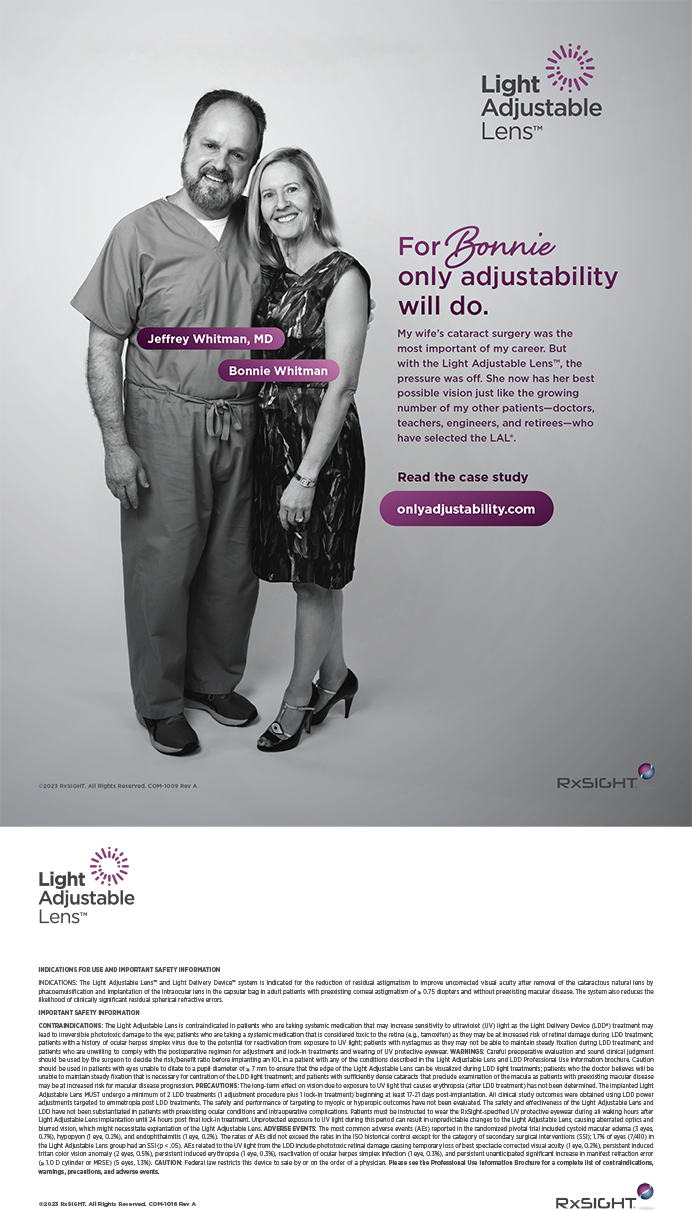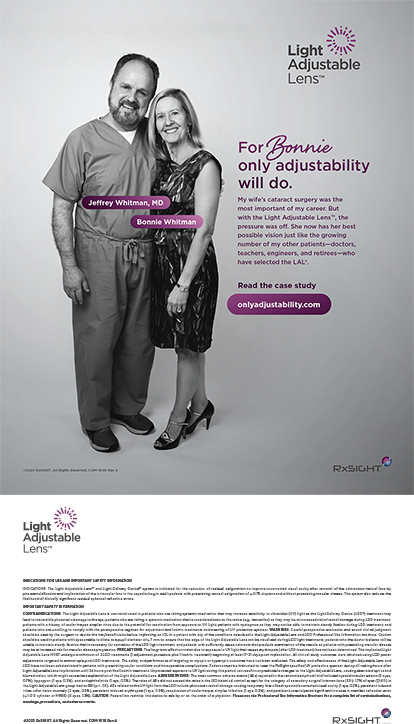How best to train surgical residents before their actual exposure to patients is an age-old question. Surgical residencies signal a shift in medical education, one away from cognitive knowledge and toward physical skills that can only be developed through repetition. Surgery requires a level of coordination and technical abilities that even the most prepared novice will struggle to obtain. Besides the required level of dexterity, a new surgeon must learn to operate using a microscope and to handle delicate tissues in a confined space.
The Accreditation Council for Graduate Medical Education has mandated that surgical skill be included in the core competencies.1 Residency programs must develop and implement effective methods of training. Although most educational curricula include print materials, videos, and wet labs, residents gain the most experience by operating on live patients.2 As medical costs rise and financial resources become limited, however, using expensive OR time to teach becomes too costly to sustain.3 Practicing in a wet lab can be an effective and necessary tool for becoming a competent surgeon.
THE HARVARD INTENSIVE CATARACT TRAINING COURSE
Establishing and maintaining a functioning wet lab for ophthalmic surgery is challenging for many reasons. The most obvious hurdle is the financial difficulty of supplying operating microscopes, phaco machines, instruments, animal eyes, and other miscellaneous supplies. Furthermore, wet labs require commitments by faculty to provide necessary instruction and feedback to the residents. Running a wet lab also demands an organized approach with a supervisor who will ensure a proper stock of supplies, the laboratory's cleanliness, and the machines' maintenance.
Many residency programs, especially smaller ones, struggle to maintain a properly supplied and staffed wet lab. This form of education is essential and remains a universal component of all training programs. To help residents obtain the necessary wet lab training, Dr. Henderson developed a new approach to teaching cataract surgery in 2005 called The Harvard Intensive Cataract Training Course (Figure 1). The course is unique in several respects. First, the respective department chairperson nominates all of the invited faculty members as the best cataract surgical teacher at their institution. As a result, faculty members are not only excellent cataract surgeons but also dedicated and experienced teachers. Second, the course consists of lectures and a 20-station wet lab, each of which is dedicated to a single surgical step. Every participant therefore receives focused instruction on each individual step of cataract surgery. In this manner, residents are exposed to numerous teachers from various programs who offer different techniques and insights. Finally, with the help of industry's sponsorship, all second-year residents are invited to attend at no cost.
The weekend-long course provides participants with comprehensive information, hands-on practice under the personal supervision of nationally renowned faculty, and exposure to different methods of teaching—all targeted at residents who are beginning their final and most intensively surgical year of training. The offering should not be considered a substitute for each training program's individual wet lab; rather, it is meant to be an additional resource for teaching cataract surgery. This sort of combined wet lab can be a useful way of pooling resources from different institutions to achieve the quality of instruction that is required for a meaningful wet lab experience.
Developing this type of educational offering would be impossible without financial support. Most academic departments and ophthalmic organizations do not have sufficient funds to sponsor these courses without outside support. Moreover, without additional funding, the registration costs for the participants would be prohibitively high. Partnering with industry is therefore a necessary component of these courses.
ACADEMIC/INDUSTRIAL RELATIONS
Pros and Cons
In today's medical arena, the financial ties between academia and industry are pervasive. A 2007 survey in the Journal of the American Medical Association revealed that 60 of academic departments and 67 of departmental chairs had some degree of financial connection with industry.4 Such academic/industrial relationships are substantial as well as prevalent. Academic institutions annually receive approximately $1.5 billion from private industry.3,4
Biomedical and pharmaceutical companies require access to academic hospitals and their patients to introduce and market their products. Physicians rely on industry's unrestricted grants for research, continuing medical education, and biomedical devices. With the limited budgets of academic departments and the high competition for grants from the National Institutes of Health, industry is now, more than ever, a major source of funds for research. In addition, industry representatives are often important sources for pharmaceutical agents, surgical devices, and even surgical techniques (Figure 2). These individuals are well accustomed to interacting with a wide range of clinicians within a medical field, and they can encourage referrals and help recruit prospective employees.
Despite the benefits of academic/industrial relations, concern that they impinge on academic freedom is well founded. Pharmaceutical and biomedical companies are ultimately for-profit organizations, and thus the motivation for industry-sponsored research is the development of a marketable product, not necessarily the advancement of medical science. The potential for bias has been elucidated in several studies. In one, the investigators reviewed 370 randomized drug trials and concluded that those sponsored by for-profit organizations were 5.3 times more likely to recommend the experimental agent for treatment than trials conducted by not-for-profit organizations.5 Furthermore, many faculty members who receive compensation or gifts from industry sponsors are required to submit their work for prepublication review. Some academic/industrial relations rely on contracts that prevent the publication of data that may counter the interests of the industry sponsor. Such restrictions can compromise scientific integrity and should be avoided, if possible.
Proper Ethics
Recently, the academic/industrial relationship has come under scrutiny. There is growing concern about the independence of research6 and the rendering of clinical decisions in light of increased funding from industry. It is important to emphasize that academic/industrial relations can advance the standard of care without influencing scientific studies or compromising academic freedom. The realization of this ideal depends on future physicians' ability to interact with industry sponsors in an ethical manner. All physicians must be fully aware of the terms of their relationship with corporate sponsors, especially with regard to restrictions on the release of data. Furthermore, physicians should be careful to avoid trials involving pharmaceutical agents owned by companies in which they hold a direct financial interest. Physicians should always disclose all potential and perceivable conflicts of interest.
With proper training on the subject as residents, future physicians will be capable of using academic/industrial relations to improve the standard of care without sacrificing medical ethics. The Harvard Intensive Cataract Training Course serves as an example of how a medical community can channel industry's support to advance medical education. Although these funds completely underwrote the event (including the faculty's travel expenses, surgical equipment, and supplies), the instructors, participants, and educational content were fully independent from the sponsors.
CONCLUSION
Industry continues to provide key financial support for wet lab materials, medical textbooks, continuing medical education, and comprehensive, regional resident training courses. By conducting themselves in an ethical manner, physicians can enter into academic/industrial relations that will help introduce new pharmaceutical agents, improve biomedical technologies, and continue critical medical education—all of which improve the quality of care for our patients.
Kelly J. Grimes, MS, is a research assistant at Ophthalmic Consultants of Boston in Waltham. He acknowledged no financial interest in the product or company mentioned herein. Mr. Grimes may be reached at kellyjgrimes@gmail.com.
Bonnie An Henderson MD, is a partner at Ophthalmic Consultants of Boston in Waltham and is Assistant Clinical Professor at Harvard Medical School in Boston. She is on the speakers' bureau for and has received grant support from Alcon Laboratories, Inc. Dr. Henderson may be reached at (781) 487-2200, ext 3321; bahenderson@eyeboston.com.


